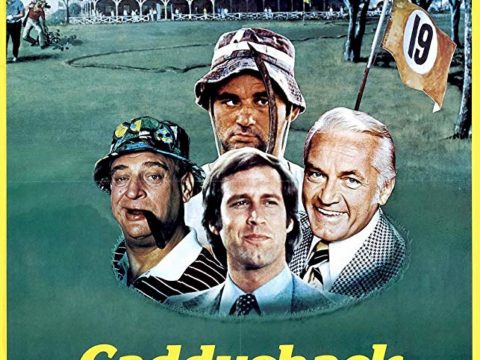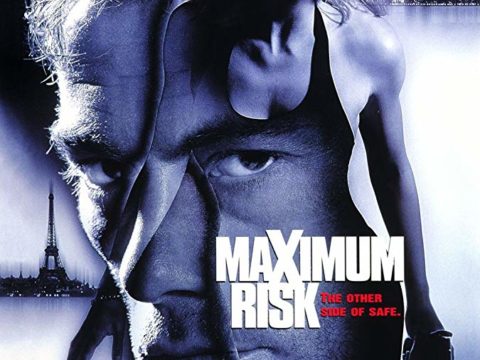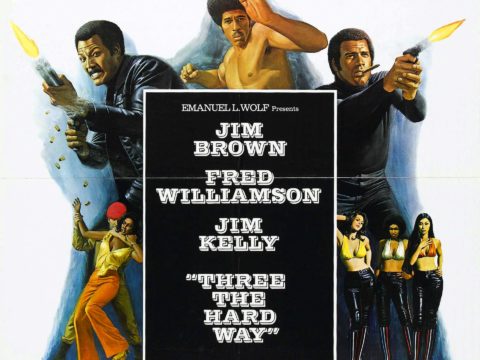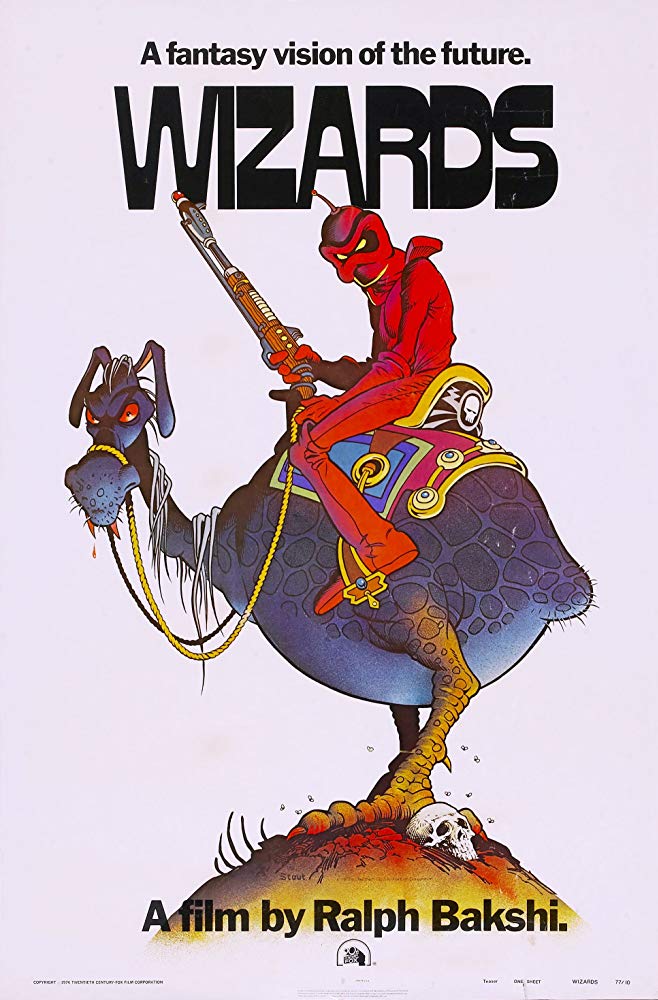
Year: 1977
Runtime: 80 min
Director: Ralph Bakshi
Starring: Bob Holt, Jesse Wells, Richard Romanus, David Proval, Steve Gravers.
The idea that Ralph Bakshi could create a Disney-like film would seem impossible for anyone that knows him from his work on Fritz the Cat or Heavy Traffic or Coonskin. But that would be discounting Bakshi’s work in animated kids shows like Heckle & Jeckle or Mighty Mouse. And Wizards is presented as a family-friendly version of the Bakshi ideal. So did he do it? Did he pull off the impossible? Wizards received a PG rating in the U.S., so does that mean this is an all-ages fantasy adventure?
No, of course not. It’s still fricking Ralph Bakshi at the helm. Despite having a PG rating, the movie features bloody violence, women in highly suggestive attire, and has Nazi imagery splashed liberally throughout the villain’s abode.
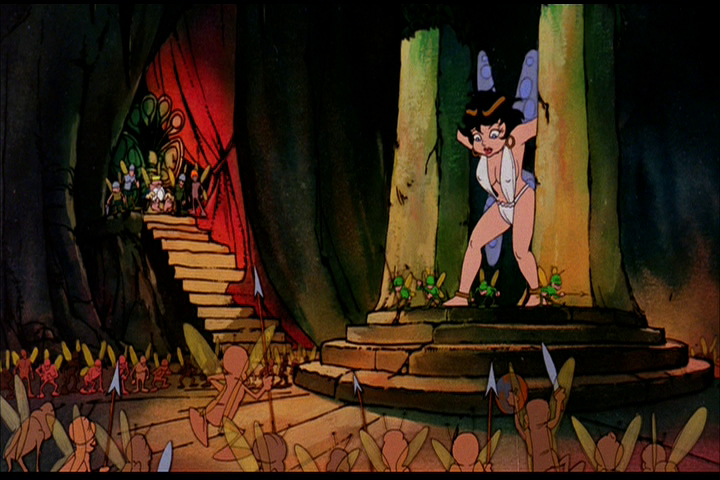
The movie’s plot is the sort of thing you’d get after taking a fantasy 101 course but presented with gorgeous narration from an uncredited Susan Tyrell. Two brothers are born many, many years after war has decimated Earth. Both are magical; one is the good and just Avatar, and the other is the cruel and evil Blackwolf. Sheesh, I’m not judging, but maybe naming one of your sons Blackwolf goes some of the way towards explaining his less-than virtuous motivations.
More years pass and the Earth becomes a traditional fantasy landscape, with fairies and elves. But the shadow of nuclear holocaust is never far, because the mutants born from centuries of war still inhabit the darker lands, guided by Blackwolf, who seeks to rediscover technology and forsake the ways of magic.
Also, for some reason, Blackwolf stirs his mutant army with propaganda from the Third Reich.
I get this is meant to create unease in the viewers, but it rings more than a little hollow. Yeah, watching the German war machine will always chill the blood, but the theme of racial and religious persecution is nowhere to be found in the film, and to see a bunch of cartoon mutants hooting and hollering over grainy black-and-white footage of yelling German men is weird. It feels like a half-baked idea, much like the rest of the symbolism in the movie.
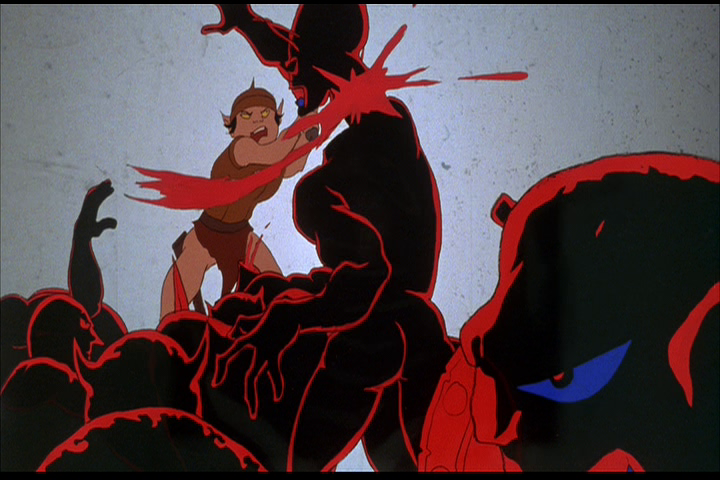
We are encouraged to believe magic and nature is good and technology is evil, but these themes are just light window dressing. Pretty much all of the symbolism falls flat and we are left with many more questions than answers when all is said and done. If technology is so awful, why does one of our main characters use it to vanquish a key foe? The scene in question is likely meant to surprise us, but there are no repercussions, no one even mentions this betrayal of beliefs, which would be like a vegan enjoying a greasy McDonald’s hamburger right in front of his friends.
Another bit that makes more sense from a stylistic point than a narrative one is how Blackwolf somehow projects the images of Nazi propaganda onto the battlefield, stunning his enemies so that they might be crushed.
But again that choice of symbolism is just egregious. It is heavy handed and meant to try and provoke a feral response from us—the audience. Why should it do anything to the animated inhabitants of this world?
Fortunately, the meat of the movie does not suffer from these unfinished allegories. The art, for instance, is beautiful, if a little uneven. Mike Poog and Ian Miller contributed designs to the film and it shows. Each artist made contributions to different aspects of the film, with Poog’s more light-handed touch at work in the fairytale land of the good folk, and Miller’s incredibly dark crosshatching on full display in the black-and-white industrial city of the mutants.
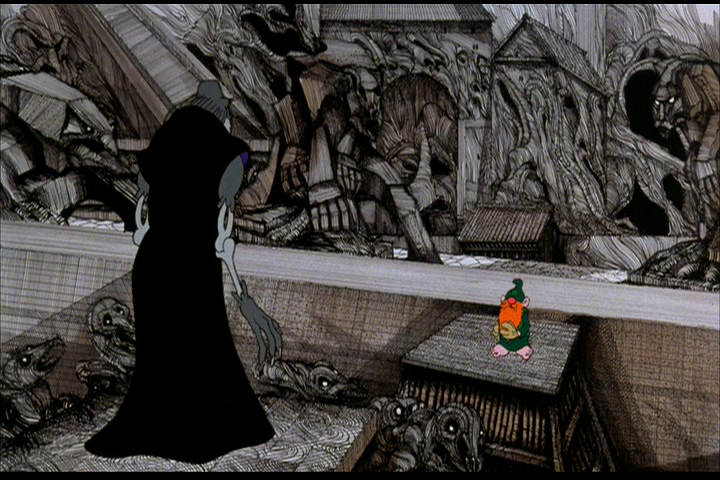
The clashing styles makes for a delightfully eclectic feast. Gloomy swamps, sweeping mountain ranges, the backgrounds are stunning and suitably fantastical for the characters to wander through on their quest.
Speaking of characters, they are just as weird and nonconforming as the environments. The supposedly heroic gnome-like Avatar plays like a New York version of Gandalf, the elf warrior Weehawk mostly just yells and threatens violence to those who wrong him, and the fairy princess Elinore…well, heck, what can we say about Elinore? She spends a good portion of the movie giggling and, frankly, just being animated eye candy, but then she has flashes of pure steel, like a scene where she draws a sword and promises to go down fighting when threatened. I would have loved a little more focus on her, because she is the most interesting character out of the bunch, and despite the movie gleefully sexualizing her she manages to hold her own, though suffers the traditional ignominy of being kidnapped for the finale.
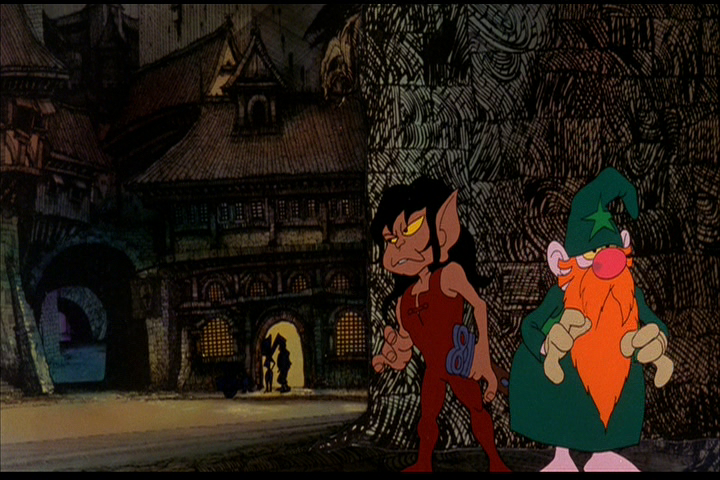
The actual animation is really good, though there are some sequences that betray the lack of a Disney budget. This weakness is largely confined to close ups, where characters are meant to emote, and even then it’s not the worst thing I’ve ever seen. Heck, even Ralph Bakshi at his worst has more character and style than most other animators at their prime.
One clever touch is the use of rotoscoped footage from old war movies inserted into the animation of the larger battles. These live actors turned into weird negative ghosts floating in a void of stars increases the trippiness of these scenes a hundred-fold. Not that the movie needed anything to spice up the trippiness quota. This is the sort of 1970s fantasy that practically demands a tab of acid before watching. I imagine they provided one when they took your ticket back in the day.
I mean, damn, you pause this movie at any point and it would make a great prog rock album cover.
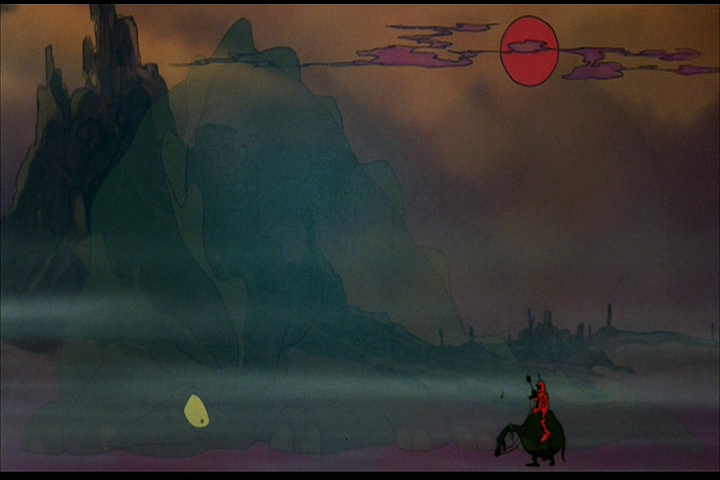
Unfortunately, the audio isn’t quite as sterling as the visuals. The music is pretty groovy, with a lot of electronic rock chords, but the voice acting isn’t quite as cool.
Oh, most of the voice acting isn’t bad, just inconsistent, which seems to be a theme here. Bob Holt, ostensibly our lead, is putting on his best Peter Falk drawl, which just seems bizarre coming out of a little bearded gnome, and Jesse Welles sounds like she’s reading some of her dialog as a white woman doing an imitation of a black woman. Actually, it makes me wonder if the character was originally meant to be black, seeing Bakshi’s past efforts. There’s also a little voice actor by the name of Mark Hamill who took some time out of filming Star Wars to voice three or four lines for a fairy. Just thought that was neat.
The biggest gripe with the voice acting has to be the lines they’re forced to read. Characters change their mind on a whim and even in the same breath of dialog. Most of the lines feel more than a little disjointed, as if this was the first draft of the script and no editor had touched it yet. It’s not terrible by any means, but it definitely keeps the movie from having any memorable quotes. I guess I’d call it good, but it could have been great.
And that’s a fair way to describe Wizards as a whole. It’s a good film, but it falls short of greatness. Any fan of Ralph Bakshi should see it, if they haven’t already, and animation fans looking for something to enjoy while relaxing with “special” brownies will probably get a kick out of it. If it had bothered to really play with the themes of fascism it might have had something to say, but even without a coherent message, it’s still a pretty film and a fun ride.

